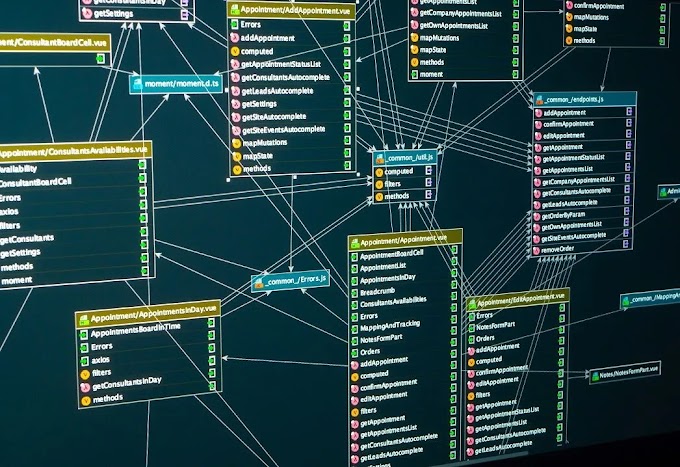1. Understand Your Goals and Target Audience
Before starting your blogging site, it is essential to understand your goals and target audience. Knowing your goals will help you create a clear vision of what you want to achieve with your site. Additionally, understanding your target audience will help you create content that resonates with them and meets their needs.
2. Choose the Right Platform and Framework
Choosing the right platform and framework is crucial for the success of your blogging site. There are many platforms and frameworks available, each with its strengths and weaknesses. Some popular platforms for blogging sites include WordPress, Drupal, and Joomla. Some popular frameworks for building web applications include Ruby on Rails, Django, and Laravel.
When choosing a platform or framework, consider factors such as ease of use, flexibility, scalability, and security. Choose a platform or framework that aligns with your technical skills and the goals of your site.
3. Focus on Design and User Experience
Design and user experience are critical components of a successful blogging site. A well-designed site with a great user experience will attract and retain visitors. Some tips for improving design and user experience include:
• Choose a responsive design that adapts to different screen sizes
• Use clear and easy-to-read fonts
• Use high-quality images and videos
• Use colors that align with your brand
• Use white space effectively to improve readability
• Ensure that your site is easy to navigate and that users can find the information they need quickly.
4. Use SEO Best Practices
Search engine optimization (SEO) is the process of optimizing your site for search engines to improve your site's visibility and ranking. Using SEO best practices can help increase traffic to your site and improve your site's ranking in search engine results pages (SERPs).
Some tips for improving SEO include:
• Choose relevant keywords for your content and include them in your titles, meta descriptions, and content
• Use header tags (H1, H2, H3) to structure your content and make it easier to read
• Include alt text for your images
• Use internal and external links to improve your site's authority and relevance
• Ensure that your site is mobile-friendly and loads quickly.
• Implement Security Measures
Security is critical for any website, and blogging sites are no exception. Implementing security measures can help protect your site from hackers and malware attacks. Some tips for improving security include:
• Use strong passwords for all user accounts
• Keep your software up-to-date with the latest security patches and updates
• Use SSL certificates to encrypt user data
• Use a firewall to prevent unauthorized access to your site
• Use security plugins to monitor and protect your site.
5. Develop Quality Content
Quality content is the backbone of any successful blogging site. Developing quality content requires creativity, research, and writing skills. Some tips for developing quality content include:
• Understand your target audience and create content that resonates with them
• Use relevant keywords and optimize your content for search engines
• Use images and videos to enhance your content
• Use a clear and concise writing style
• Write content that is informative, engaging, and actionable.
6. Implement Analytics
Analytics is the process of collecting, analyzing, and reporting data about your site's performance. Implementing analytics can help you track user behavior, measure site performance, and identify opportunities for improvement. Some tips for implementing analytics include:
• Use a web analytics tool such as Google Analytics
• Set up goals and events to track user behavior
• Monitor your site's performance metrics such as page load time, bounce rate, and conversion rate
• Use A/B testing to test different versions of your site and measure their performance
• Use analytics data to make informed decisions about improving your site.
7. Test and Optimize Your Site
Testing and optimization are crucial for improving the performance of your site. Regular testing can help you identify and fix issues that may be affecting your site's performance. Some tips for testing and optimizing your site include:
• Test your site on different browsers and devices to ensure that it works correctly
• Test your site's performance and optimize it for faster page load times
• Use A/B testing to test different versions of your site and identify which version performs better
• Use analytics data to identify opportunities for improvement and optimize your site accordingly.
8. Provide Good User Support
Providing good user support is essential for building trust with your audience and creating a positive user experience. Some tips for providing good user support include:
• Provide clear and concise instructions on how to use your site
• Offer a FAQ section to address common user questions
• Use chatbots or other tools to provide real-time support to users
• Respond promptly to user inquiries and feedback
• Use user feedback to improve your site.
9. Regularly Update and Maintain Your Site
Regularly updating and maintaining your site is essential for keeping it running smoothly and protecting it from security threats. Some tips for updating and maintaining your site include:
• Regularly update your software and plugins with the latest security patches and updates
• Monitor your site's performance and fix any issues promptly
• Regularly backup your site to protect it from data loss
• Regularly review and update your content to ensure that it remains relevant and useful
• Regularly test and optimize your site to improve its performance.
In conclusion, coding a blogging site from scratch requires careful planning, creativity, and attention to detail. By following these best practices, you can create a successful blogging site that attracts and retains visitors, provides a great user experience, and achieves your goals.







